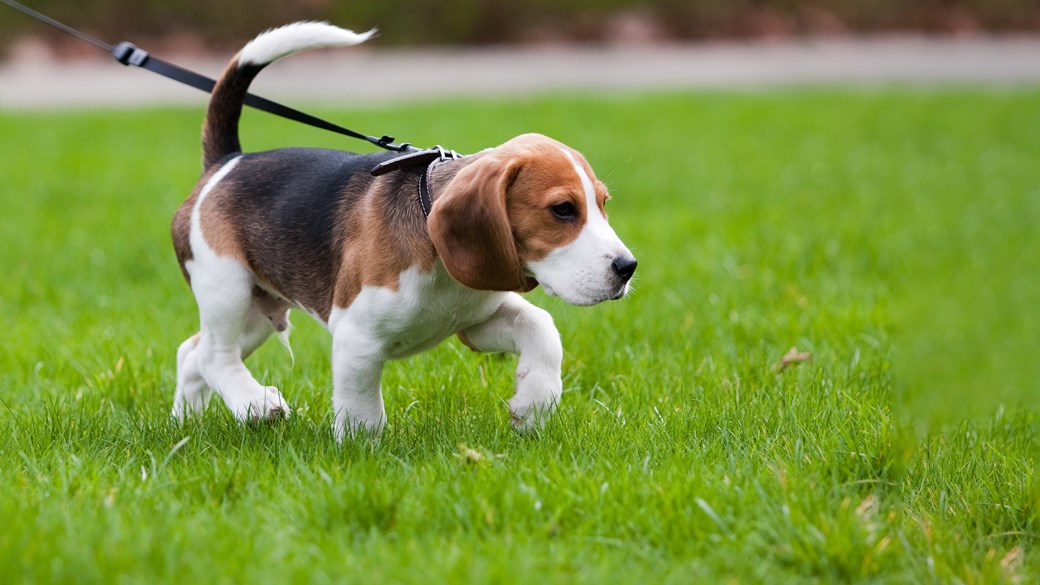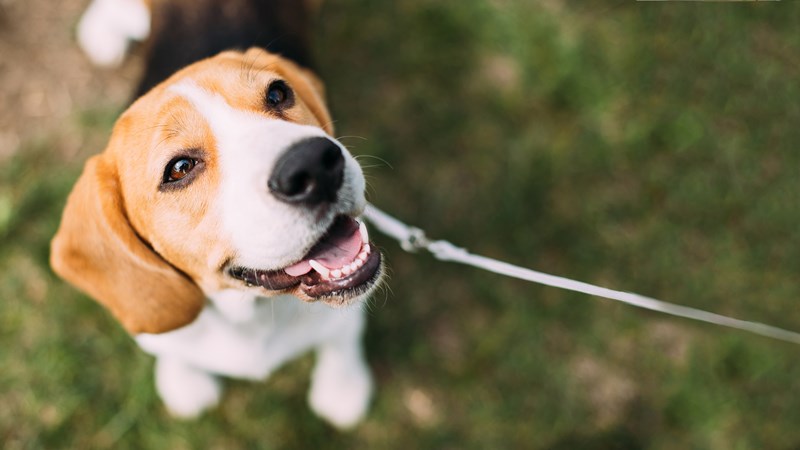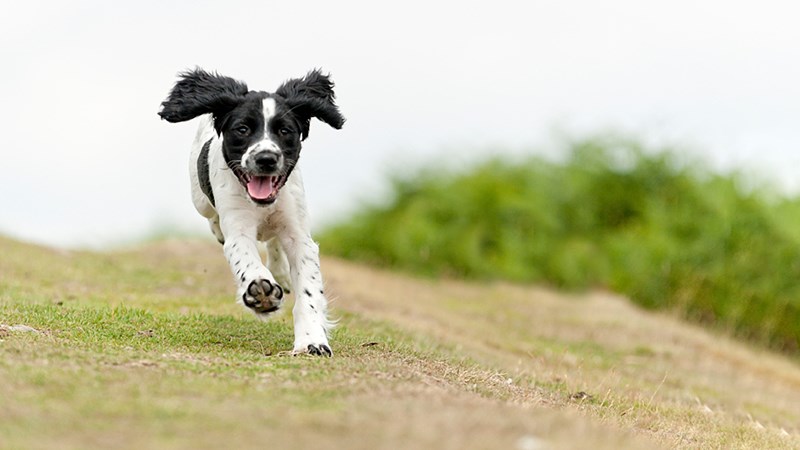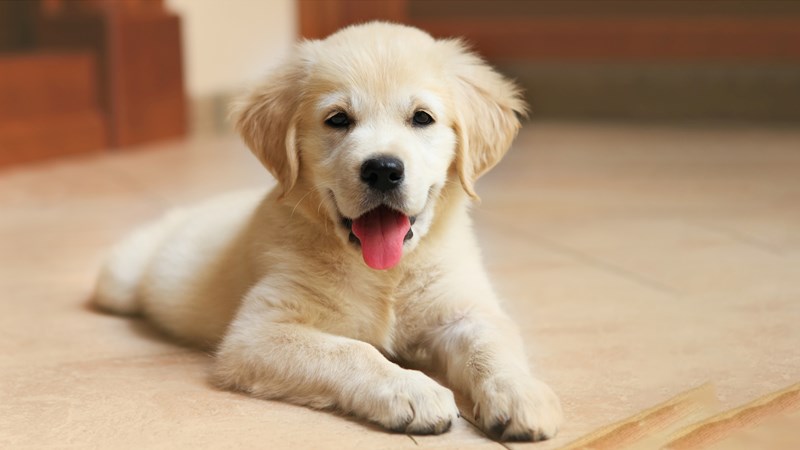
Puppy Training
Training for life – how to set your puppy up for success!
Puppies are always learning. Whether they’re making progress with formal training or
they’re developing little habits of their own, they’re like sponges and everything they do is an opportunity to learn.
In order to help your puppy to understand what’s expected of them, it’s important that everyone who lives with or takes care of them knows what the puppy is and isn’t allowed to do, and also that they know what words and actions you’re teaching your puppy. It can be stressful for a puppy if, for example, the children in the family let them on the furniture, while the parents don’t. If everyone knows the rules, the puppy will be able to relax, knowing they’re doing the right thing and that they’re not suddenly going to get told off.
Check out our guide to setting up your puppy for training success and equip yourself with the knowledge to teach your puppy anything you like. You can make it easy for your puppy to get it right every time and have a lot of fun together along the way!
Lead training tips
Going for a walk with a dog who hasn’t been taught how to walk on a lead is hard work! It’s easy to think that if your puppy pulls on their lead, then it’s just their nature. Don't worry, with a few simple tips, you can get them walking contentedly at your side in no time.

What is recall training?
Puppies love being able to get off their leads and explore. But if getting them to come back is difficult, you might not want to let them off. That’s where recall training comes in. This is where you are able to call out a simple command and get your puppy to return to you quickly.

Learning sit
Some commands are pretty much essential for every puppy and their owner. And, though the thought of getting an unruly pooch to follow instructions might sound daunting, it can actually be great fun. We’ve put together a guide on mastering the command sit.

Reward and punishment
All puppies are different! Something you might think is a wonderful reward isn’t necessarily very special to your puppy. When you’re training your puppy, it’s good to figure out what really motivates them and have their favourite rewards ready.
Some puppies love food rewards, while others are much more into toys. An often overlooked reward is attention. Your attention is so important to your puppy and this is something we often forget. You’ll see later how paying attention to your puppy at the wrong time can hinder, rather than help, your training.
Rewards have a higher or a lower value, depending upon your puppy’s preferences. Sometimes, you might need to ‘pay’ a puppy really well for an extra-special effort, so you’ll offer a high-value reward. If you have a food-orientated puppy who gets so excited about treats they can’t concentrate on their training, you’ll need to choose food rewards of lower value, or non-edible rewards for most of your training. Whether your puppy likes food or toys, interspersing low-value rewards with the occasional ‘jackpot’ high-value one keeps things interesting and keeps the puppy wondering whether the next time they perform a behaviour for you is going to be the one that earns them a bumper harvest!
There are two kinds of ‘punishment’. The first is called ‘positive punishment’, and this means doing something unpleasant or aversive to the puppy when they have done something undesirable.
Positive punishment might involve physical correction, such as a sharp tug on the lead (puppies should never, ever be grabbed by the scruff of their neck, shaken, smacked or slammed down onto the ground), or a verbal correction, such as shouting, “No!” loudly when you see them doing something you don’t like. Without a doubt, positive punishment has very little place in dog training. It can lead to a fearful puppy who doesn’t trust their family, which is very difficult to repair.
The second kind of punishment is called ‘negative punishment’. This is where you withhold something nice. An example of this is if your puppy was being taught to wait and they got up and walked over to you, expecting attention. By ignoring them and withholding attention, you would be using negative punishment.
Although the term ‘negative punishment’ might sound unpleasant, it just means not giving a reward for an action that wasn’t what you wanted. It can make some puppies feel frustrated while they try to figure out what you actually want but, learning to cope with frustration is a really important life skill. As long as you remember to make it easy for your puppy to succeed, frustration shouldn’t feature too often.
Sometimes, you might inadvertently be rewarding a behaviour you don’t like. Let’s say your puppy has begun to bark or whine when they want your attention. The natural response to this, especially if you’re trying to have a conversation with someone when your puppy begins to vocalise, is to tell them to be quiet, or perhaps to stroke their head to soothe them.
Remember that animals just do what they need to in order to get through life and also, that attention is a really important resource to pets. Speaking to your puppy, touching them, or even making eye contact when they’re performing an attention-seeking behaviour, is exactly what they’re hoping you’ll do! You might think you’re using a mild punishment by telling them to be quiet but, if you give them attention, you’re rewarding the inappropriate behaviour, which makes it more likely to be repeated.
In a similar way, if your puppy jumps up at you and each time they do, you tell them, “Off!”, you’re inadvertently rewarding the jumping up by giving them attention. Even if you may think that shouting at them would put them off jumping up, the puppy would see this as a moment of your precious, undivided attention. You’re also teaching your puppy to associate the word ‘Off!’ with jumping up. In this case, it’s better to turn away from your puppy and wait until they’ve sat down, or at least got all four paws on the ground (it’s up to you what you consider the preferred behaviour), before you reward them with some attention at puppy level. This is an example of negative punishment.
Puppy Training FAQs
Just like humans, some puppies can concentrate for longer than others. ‘Little and often’ is a good approach to training. If you can fit in a five-minute training session twice a day, that will be plenty for most puppies.
You’ll also have lots of opportunities for ‘training’ as you go about daily life. To make sure your puppy knows when a training session is over, you can use a phrase like, ‘All finished!’, so that they can relax and not get frustrated by showing you their new behaviour and not being rewarded for it.
Puppies make strong associations between events when they occur close together. You can use this to your advantage when training. If you want to let a puppy know they did something right and you can get that reward in within about half a second, the puppy will make a strong association with it. Keep rewards ready to be given instantly – you don’t want to be fumbling in your pocket for them, because the association between action and rewards will be lost!
Clicker training is a great way to make it clear to your puppy when they’re doing something you like, but you can also use a word like, “Yes!” to signal the exact moment your puppy is doing something reward worthy. Many dog trainers use clicker training as a method of teaching.
If you decide to get help from a dog trainer or if you want to join a training class, first ask your vet practice whether they can recommend one. Look at the trainer’s website, if they have one, see what training methods they use and find out whether they run puppy classes.
You’re looking for ‘reward-based training’ and mention of clicker training is a good sign. Go along without your puppy to watch a class in progress. Small groups should be less overwhelming for your puppy and should mean you’ll get more attention from the trainer. Look for a calm and friendly atmosphere and if you see any sign of rough handling, check chains or positive punishment, walk away.
